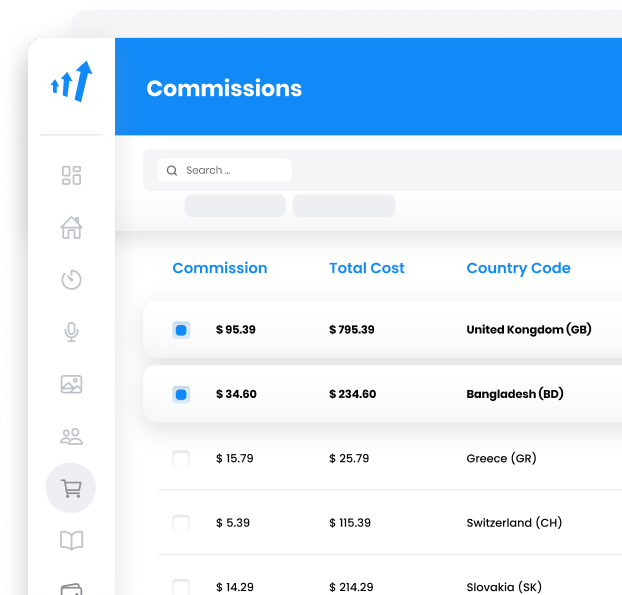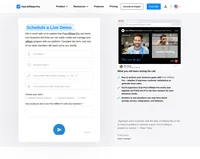What is a Demand-Side Platform (DSP)?
A Demand-Side Platform (DSP) is a software solution that allows advertisers and advertising agencies to purchase digital ad inventory from various ad exchanges through a single interface. Utilizing real-time bidding (RTB) technology, DSPs automate the bidding and purchasing of ad space, streamlining the advertising process and enabling real-time campaign management. This automation not only simplifies the ad-buying process but also enhances the effectiveness of advertising strategies by ensuring precise audience targeting and efficient budget allocation.
Key Features of DSPs
- Automation and Efficiency: DSPs automate the ad-buying process, significantly reducing the need for manual negotiations with publishers. This leads to a more efficient workflow, allowing advertisers to manage multiple campaigns across various platforms seamlessly. Automation is essential for scaling advertising efforts and optimizing resource allocation.
- Real-Time Bidding (RTB): DSPs utilize RTB to purchase ad impressions in real-time, auctioning off ad placements in milliseconds. This process enables advertisers to make immediate decisions based on their budgets and targeting criteria, ensuring that ads are displayed to the most relevant audience segments.
- Audience Targeting: Advanced targeting capabilities are a hallmark of DSPs. Advertisers can reach specific audience segments based on demographics, interests, location, and behavior. Precision targeting increases the relevance of ads and enhances the effectiveness of advertising campaigns.
- Cross-Platform Integration: DSPs integrate with multiple ad exchanges and supply-side platforms (SSPs), providing access to a broad range of digital ad inventory from websites, apps, and other digital platforms. This integration allows for diversified campaign execution across different media channels.
- Performance Measurement and Optimization: DSPs offer robust analytics and reporting tools, enabling advertisers to monitor campaign performance in real-time. This data-driven approach facilitates the continuous optimization of bidding strategies and targeting criteria to improve return on investment (ROI).
- Cost-Effectiveness: By leveraging programmatic buying and precise targeting, DSPs help minimize wasted ad spend and increase the overall efficiency of advertising budgets. Advertisers can achieve more with less, maximizing the impact of their marketing efforts.

How Do DSPs Work?
The operation of a DSP involves several crucial steps that facilitate the automated purchase of digital ad space:
- Campaign Setup: Advertisers configure their campaigns within the DSP, defining budgets, targeting criteria, bid strategies, and creative assets. This setup ensures that ads serve the most relevant audience segments.
- Integration with Ad Exchanges: The DSP connects to various ad exchanges and SSPs, accessing a wide range of available digital ad inventory. This integration is vital for ensuring comprehensive market access.
- Real-Time Bidding: The DSP participates in RTB auctions, where ad impressions are bought and sold in real-time. The bidding process is guided by the advertiser’s budget and targeting criteria, allowing for strategic decision-making.
- Ad Serving: Once a bid is won, the advertiser’s creative is served to the user on the publisher’s site or app. This process occurs in milliseconds, ensuring rapid ad delivery and engagement.
- Performance Monitoring and Optimization: The DSP tracks campaign performance, collecting data on impressions, clicks, conversions, and other key performance indicators (KPIs). Advertisers use this data to manually or automatically adjust bidding strategies and targeting criteria for improved results.
- Reporting and Insights: DSPs provide detailed reports that offer insights into campaign performance, audience reach, and ROI. These insights enable advertisers to make informed decisions for future campaigns.
Types of Demand-Side Platforms
DSPs come in various forms, each offering different levels of control and service:
- Self-Serve DSPs: These platforms allow advertisers to manage the ad-buying process independently. Advertisers can upload creatives, place bids, and optimize campaigns without external assistance. This approach offers full control and is typically cost-effective due to the absence of third-party involvement.
- Full-Service DSPs: In this model, the DSP provides account management and campaign execution services. It is suitable for advertisers who prefer to focus on creative aspects while relying on external expertise for programmatic ad buying.
- White-Label DSPs: These platforms offer customizable solutions, allowing businesses to rebrand the DSP as their own. Advertisers can tailor the DSP to fit their specific needs, integrating it with various ad exchanges and SSPs for diverse audience reach.
Emerging Specialist DSP Categories
As the digital advertising landscape evolves, specialized DSPs have emerged to cater to specific ad formats and channels:
- Mobile DSPs: Focused on mobile ad inventory, these DSPs connect to mobile ad exchanges to serve ads on smartphones and tablets, capitalizing on the growing mobile user base.
- Video DSPs: With the rise of video advertising, video DSPs specialize in serving video ad formats, offering advanced targeting and a wide range of video inventory to reach audiences effectively.
- Connected TV (CTV) DSPs: Targeting the growing market of internet-connected television devices, CTV DSPs offer precise targeting and advanced audience insights for streaming content, tapping into the increasing popularity of over-the-top (OTT) media.
DSPs and the Affiliate Marketing Connection
In affiliate marketing, DSPs offer significant advantages for affiliates aiming to expand their reach and optimize campaigns. By leveraging DSPs, affiliates can access broader audiences, utilize advanced targeting capabilities, and manage advertising spend effectively. This integration facilitates more efficient promotion of affiliate offers across diverse digital platforms, enhancing the potential for conversions and revenue growth.
Choosing the Right DSP
When selecting a DSP, consider the following factors:
Cost Structure: Evaluate the DSP’s pricing model, ensuring it aligns with your budget and offers transparency regarding fees and commissions. Understanding the cost implications helps in effective budget management.
User Interface: Ensure the DSP has an intuitive and user-friendly interface to simplify campaign management. A well-designed interface enhances the user experience and reduces the learning curve.
Targeting Capabilities: Look for a DSP that offers comprehensive targeting options to reach your desired audience effectively. The ability to target specific demographics and behavioral attributes is crucial for campaign success.
Integration with Ad Exchanges: Verify that the DSP provides access to the ad inventory you need to achieve your campaign goals. Broad integration ensures a wide reach and flexibility in campaign execution.
Performance Analytics: Choose a DSP with robust analytics and reporting tools to track and optimize campaign performance. Detailed insights are essential for making informed decisions and maximizing ROI.

Frequently Asked Questions
Why are demand-side platforms important?
Demand-side platforms (DSPs) are important because they help advertisers reach their target audiences more effectively and efficiently. DSPs allow advertisers to bid on ad space in real-time, which means they can tailor their campaigns to specific audiences and optimize their expenses.
Who uses demand-side platforms?
Demand side platforms are used by merchants, managers and advertisers.
What are some examples of demand-side platforms?
There are many demand-side platforms, or DPS, such as Bucksense, SiteScout and MediaMath.
Explore Post Affiliate Pro's comprehensive Affiliate Marketing Glossary to enhance your industry knowledge with easy-to-understand definitions of essential terms. Perfect for marketers seeking to understand the fundamentals and advanced concepts, this glossary helps you master the language of affiliate marketing. Visit now to boost your expertise!
Explore seamless integrations with Post Affiliate Pro to enhance your affiliate marketing strategies. Discover solutions for e-commerce, email marketing, payments, and more, with easy integrations for platforms like 1&1 E-Shop, 2Checkout, Abicart, and many others. Optimize your affiliate network with these powerful tools.
The leader in Affiliate software
Post Affiliate Pro offers a comprehensive affiliate software platform to manage multiple affiliate programs with ease. Enjoy no setup fees, 24/7 customer support, and a free 1-month trial. Ideal for small and large businesses, it features precise tracking, automated workflows, and customizable tools to boost your affiliate marketing success. Try it now and streamline your affiliate operations effortlessly!
Discover Post Affiliate Pro's flexible pricing plans tailored to fit your business needs, with options for Pro, Ultimate, and Network packages. Enjoy a free trial with no credit card required, no setup fees, and the freedom to cancel anytime. Benefit from features like unlimited affiliates, advanced reporting, customizable interfaces, and lifetime support. Save up to 20% with annual billing and take advantage of more than 220 integrations. Perfect for businesses seeking to enhance their affiliate marketing efforts. Visit now to find the ideal plan for you!
Discover the essential role of affiliate software in managing and optimizing your affiliate marketing programs. Learn how it streamlines link tracking, referral management, and commission payments, ensuring data security and fraud prevention. Unlock growth opportunities with efficient program management and boost your business's reach and ROI. Visit now to explore the benefits of investing in affiliate software!










